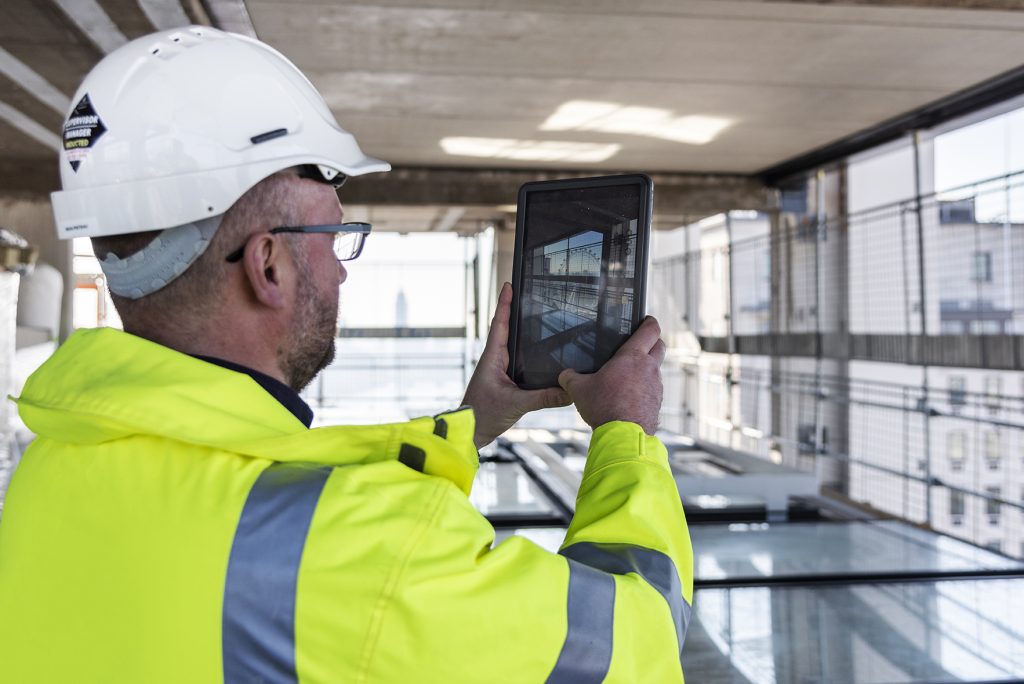
If there’s one thing businesses across industries and sectors learned as a result of the COVID-19 pandemic, it’s that digital transformation is no longer a nice-to-have — it’s a business imperative. In times of crisis, business continuity depends on it.
But engineering and construction companies didn’t need a pandemic to come to this realization.
A 2018 report by Ernst & Young found that 98% of engineering and construction companies agree that digital solutions are critical to the future viability of their company.
Essentially, digital transformation refers to the progress companies are making toward digitizing essential business processes. Digital transformation means automating and digitizing previously manual or paper-based processes to increase efficiency, reduce costs and enable your employees to work and collaborate more effectively.
For construction firms who have a plan for digital transformation in place, the main area of focus is on organizational structure, tools and processes for collaboration, communication between employees, company culture and workspace design. Here’s a look at how that’s playing out currently, both in the office and on the jobsite.
In the Office
Traditional paper-based processes related to project management and logistics, employee training, marketing outreach and collaboration are being transformed with cloud-based software tools and services. Here are a few examples of technologies being employed by construction management and office staff:
- According to a recent study from Associated General Contractors of America (AGC), 85% of construction contractors use or plan to use cloud-based solutions. Cloud-based project management tools automate workflows and documentation, saving firms time and eliminating errors resulting from manual processes. They also ensure all customer data, financial information, designs and plans and proprietary details are stored safely in the cloud for fast, reliable accessibility and retrieval.
- Collaboration tools enable project managers and stakeholders to streamline communications and keep everyone in the loop about project progress. Such tools are cloud-based and accessessible via web browser, and many offer mobile apps so workers can connect and collaborate while on the jobsite. Information and updates can be shared in real-time between workers and stakeholders, enabling rapid decision-making which helps projects stay on-time and on-budget.
- Video-based employee training and learning management systems provide a cost-effective alternative to in-person, instructor-led training. In fact, 40% of Fortune 500 companies use learning management systems to remain competitive. Construction firms can leverage such digital tools to deliver training content to mobile devices while workers are on the jobsite, providing in-the-flow training and instructions that help to eliminate non-compliance risk while upleveling worker skill sets.
On the Jobsite
Drones, wearables and construction cameras are bringing digital transformation to the jobsite, enabling new capabilities while helping to keep workers safe and productive. Here are some technologies increasingly being used by workers on the jobsite:
- Mobile technology is one of the biggest digital trends on the jobsite: 80% of construction professionals say mobile technology is a top priority. Smartphones can be used to enhance communication and capture images of work in progress, assist with documentation and speed decision-making. Mobile technology includes the use of wearables, which can help deliver relevant instructions and training on the job mid-task or monitor workers’ vitals such as temperature and heart rate when working in extreme conditions, for instance. Today, 23% of contractors believe they’ll adopt wearable technology onsite in the next three years.
- Drone usage in construction increased 239% over the last year. Drones make it fast and easy to survey expansive construction sites or sites that are inaccessible. In just a few minutes, drones can capture much of the same visual data that a surveyor would take a day to collect by walking on-foot.
- The use of construction cameras is also on the rise: In the U.S. Institute of Building Documentation’s 2018 survey of 256 construction companies, three-fifths reported using construction cameras on their projects. Construction cameras provide ongoing jobsite surveillance, improving security, increasing worker productivity and ensuring compliance with policies and regulations. Time-lapse and live streaming video can be used for bidding and marketing purposes and to raise awareness about projects happening in the community.
Transformation Takes Time
For most construction companies, complete digital transformation will take time. Making digital solutions easy to access and use, and providing adequate training to help workers develop the necessary technical skills will be essential to enabling the adoption of new technologies and processes. Additionally, stakeholder buy-in will enable firms to allocate budget to new digital tools and platforms.
To see how TrueLook can help with live jobsite viewing, custom time-lapses and intelligent security, check out some of our live demo cameras here.


